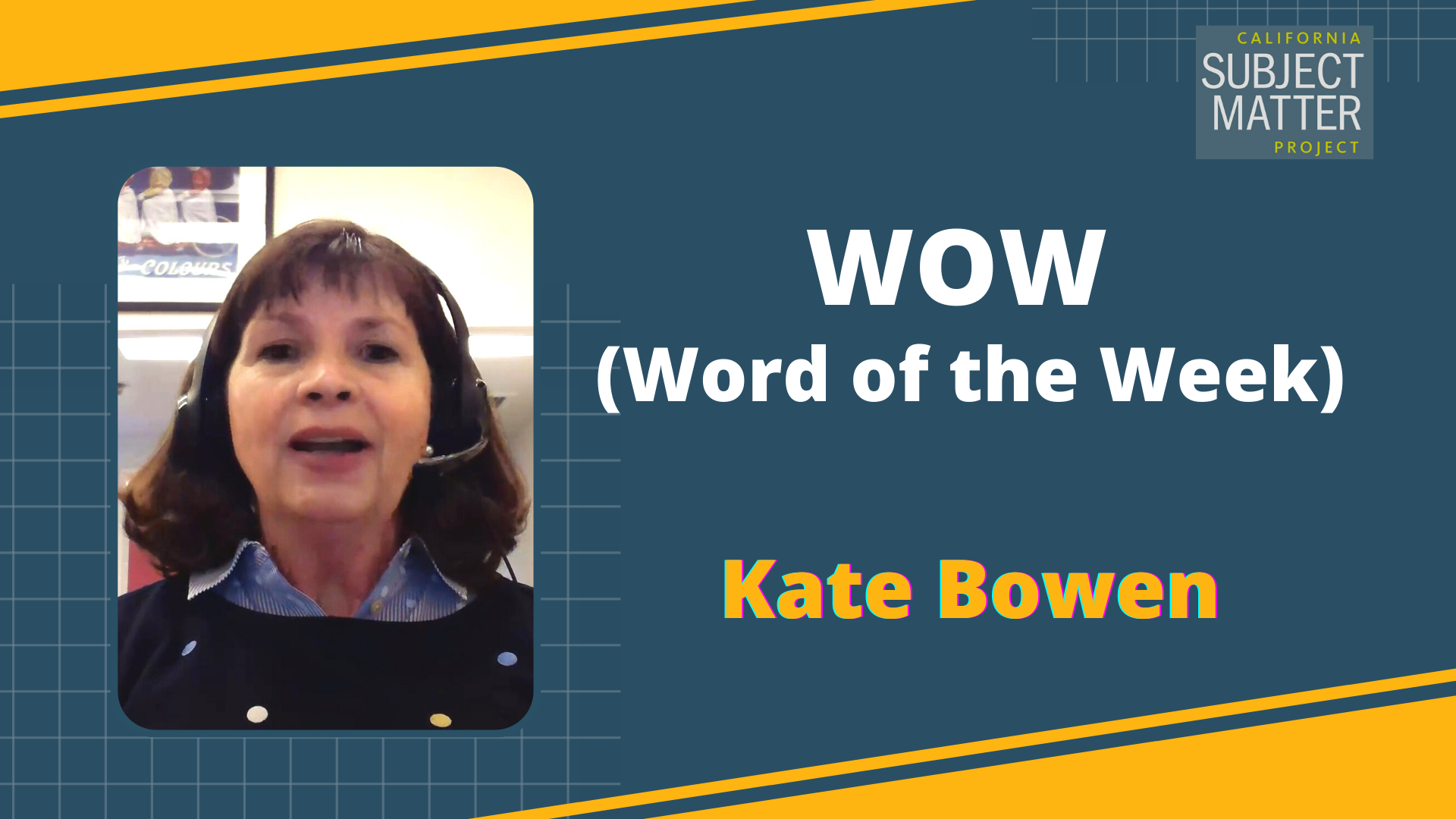Watch the Video
Presenter
Dr. Susan Hawkins is a K-8 Science TOSA with Manteca Unified School District, California.
Transcript
Hi, my name is Dr. Susan Hawkins. I’m a K-8 Science TOSA with Manteca Unified School District, and a teacher leader with the California Science Project. Today I’m going to share an instructional practice with you: Asking Open-Ended Questions.
The main ideas of digging deeper with open-ended questions are that you want to get the kids thinking. You don’t want to just have them have one right answer, yes or No. You want to show them their ideas are valuable and let them build on their ideas, allowing the students to create their own knowledge.
Asking open-ended questions is great for K-8 classrooms. So let’s dig deeper with asking open-ended questions.
You want to start the process by asking students what they already know about a subject. For example: “How many of you have ever seen a rainbow?” A great way to start this, kick it off, is by having a photo or a short video at this point.
Allow the kids to talk with their groups about it and get excited about the topic, and then you want to pose an initial question asking the students what do they think? Instead of just throwing them into a whole group conversation at this point, what you want to do is post a sentence starter, a sentence frame like, “I think a rainbow is made by…” and then let them practice that statement with a shoulder partner.
Once they’ve had a chance to share with their shoulder partner, then invite volunteers to share with the whole group.
When you are in this whole group conversation, this is the time to dig a little deeper. You can ask the students, “why do you think that rainbows were made that way?” You can give them a sentence frame, “I think rainbows are made…” And how they think they’re made, “because…” and why they think that. You could even create a chart: “What we think” and “why we think it.” Be sure to accept and celebrate all ideas because that’s how ideas are built in science.
A couple of points to remember:
- Give students time to discuss with a partner or small groups first before the whole group sharing to allow students to practice stating their ideas, helping them build their language, their social skills, and their confidence.
- Provide a sentence frame to allow the students to focus just on the key ideas while practicing their scientific language.
Remember, be open to a variety of answers. If the student is stating what they’re thinking, they cannot get it wrong. The message to convey is that all ideas are valuable.
In conclusion, asking open-end questions in science engages and empower students, as well as builds their critical thinking skills.
Accompanying Materials & Resources
- Quick Guide: Asking Open-Ended Questions (PDF – 1 Page)
- Open-Ended Questions – How to (Google Doc)
- Open-Ended Questions – 50 open-ended science questions for children (Google Doc)



